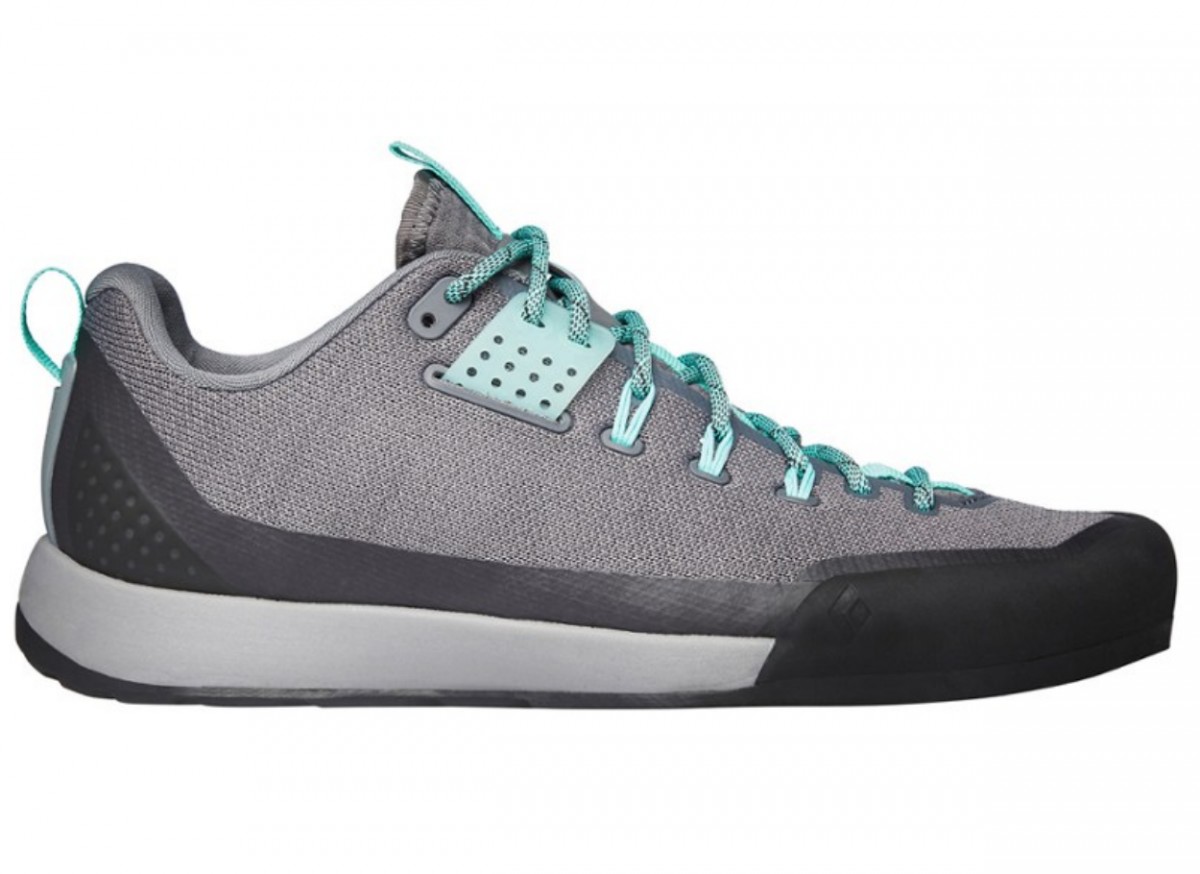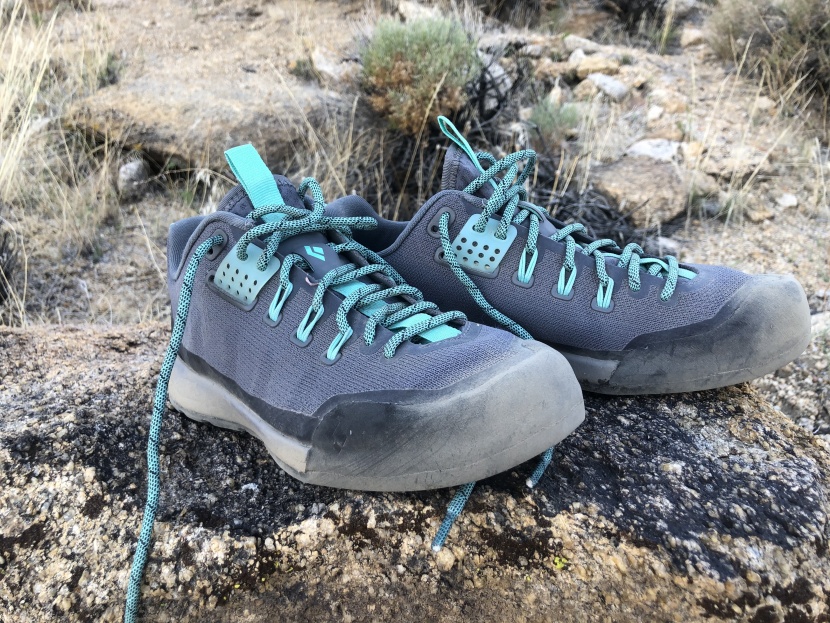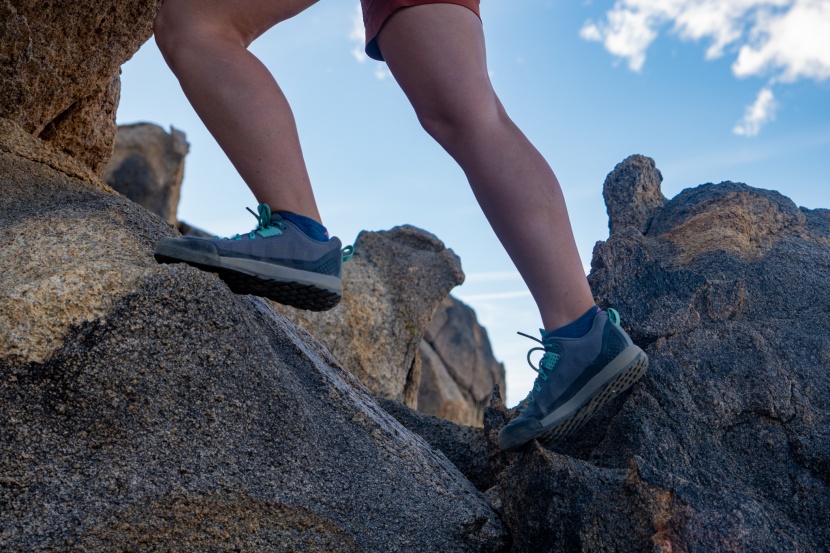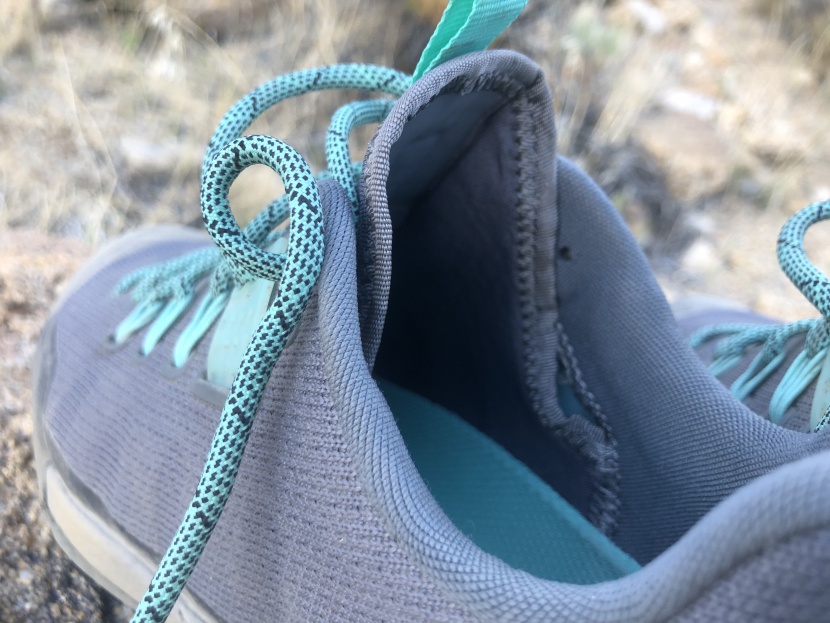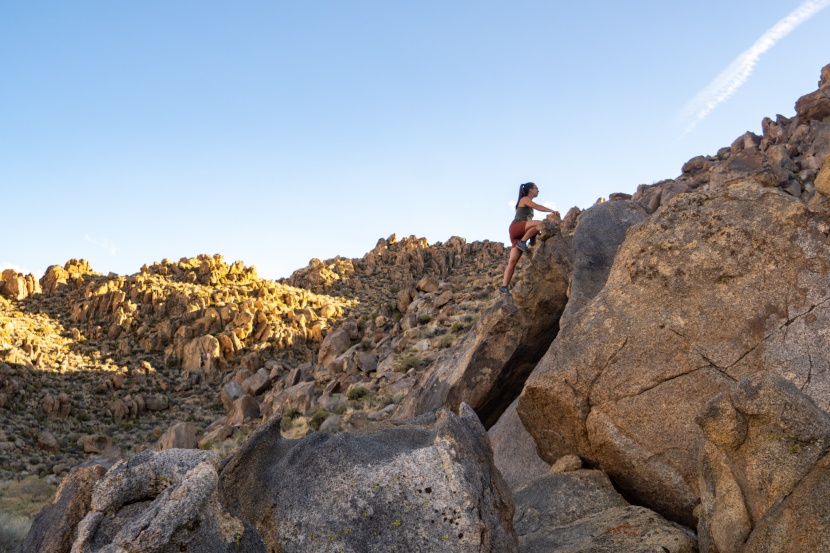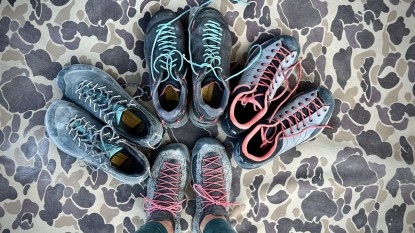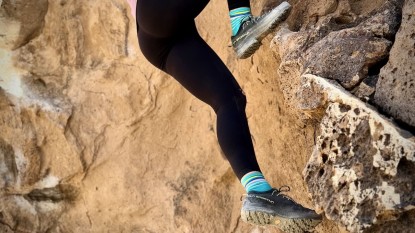Black Diamond Technician Approach - Women's Review
Our Verdict
Our Analysis and Test Results
The Black Diamond Technician is part of this company's first line of approach shoes, and though BD excels in hard goods, their shoes have some room to improve. They have above-average climbing ability and are right in the middle of the pack for weight. However, their hiking comfort and support left us less than impressed.
Climbing Ability
Approach shoes are a fun category for us here at the GearLab because they're a relative niche product that combines the best of two other categories: hiking shoes and climbing shoes. While hiking shoes often meet the needs of most rock climbers, approach shoes are crucial when the approach requires moving confidently over third-, fourth-, and sometimes even fifth-class terrain. We found above-average climbing ability in the Black Diamond Technician, and we wanted to figure out why.
In this review, we don't get into the specifics of the rubber on each shoe, but we will note that Black Diamond's shoes are using BlackLabel-Mountain rubber while most of the other products in this review use Vibram (other rubbers include Trax and Stealth). As long as the rubber does the job, though, it's up to the design of the shoe itself to determine climbing ability. The first thing we look at is lacing. The Technician's laces extend well down toward the toe, which helps us really maximize a precise fit. However, we also want to note that the laces are surprisingly difficult to adjust on this product. The laces are thicker than many of the laces we've tested, and while that's probably good for durability, it's nearly impossible to slide the laces through their openings-- which drove us crazy.
Again, once we're past the awkward lacing, we quickly noticed that the Technician performed well in our three types of foot movement: edging, smearing, and jamming. This shoe has a thin profile that makes it easy to slip into cracks, and the toe is precise enough to find small edges. The heel is low-profile as well, making for easy smearing on slabs and uneven terrain.
Hiking Comfort
Like we mentioned above, approach shoes are the middle ground between climbing and hiking. Because we want our shoes to be precise in technical terrain, we don't want them to be big and cumbersome, but we do want comfort on long hikes. The Black Diamond Technician struggled to find this balance, and the stiff upper of this model resulted in discomfort on steep terrain.
We wore these shoes everywhere while we were testing, and we found the Technician to be just fine on flat terrain. While we ran our errands and walked on flat paths, we found them to be relatively comfortable, but when we started going uphill we noticed an issue. These shoes are stiff, and when we walk uphill, they don't bend or flex enough on the top of the forefoot to allow for easy movement. So instead of moving with us, each step equals a stiff poke on the top of the foot. We were able to break these shoes a decent amount, and maybe this issue will continue to be diminished over time, but we really want to be able to wear our shoes out of the box. And, since approaches almost always have an uphill component, this was a significant issue.
Support
Climbing approaches vary. Sometimes, we're mere minutes from the car; other times, we're hiking for days on end to reach our destination. And while the “hiking comfort” described above explains the fit and feel of each shoe per step, the “support” metric we'll discuss here pertains to each shoe's ability to support us on long, rugged approaches.
The Black Diamond Technician doesn't have a lot of bells and whistles, and this is definitely demonstrated in the support realm. It's a relatively flat shoe, and while it has way more support than some of our lightest products, it also doesn't have the shape and bulk of some of the burlier shoes that we tested. We'd wear this shoe around for a while, but after a whole day in them, our feet were aching for something else.
Weight and Packability
Unlike a hiking shoe that stays on our feet throughout their whole use, going climbing usually involves swapping out the approach shoes for climbing shoes at some point. If you're cragging or rappelling a route, this may seem unimportant, but it's only a matter of time before you find yourself clipping your approach shoes to your harness for a wild walk-off.
This Black Diamond product weighs 21 ounces. Because this shoe is light enough to carry on routes, it's important that it also has a functioning carrying method. The loops on the back of the Technician aren't super thick, but they are looped through the plastic on the back of the shoe, giving us some confidence that they won't break and fall off while we're climbing. (That being said, we can never guarantee this, so we recommend also clipping your shoes to your harness via the laces for extra security.)
Value
The Technician's price point is right in the middle of all the shoes that we tested. If you're looking for one pair of shoes to get you just about anywhere, we do think you can find a shoe with better overall performance for the same price or even less.
Conclusion
The Technician is part of Black Diamond's first approach shoe line-up, and they're not a bad start. The main issue we have is its stiffness. It's pretty uncomfortable to walk uphill in these shoes, which is what we're usually doing in our approach shoes. After that, they have above-average climbing ability, making them a decent crag shoe but not our first choice for big alpine missions.


